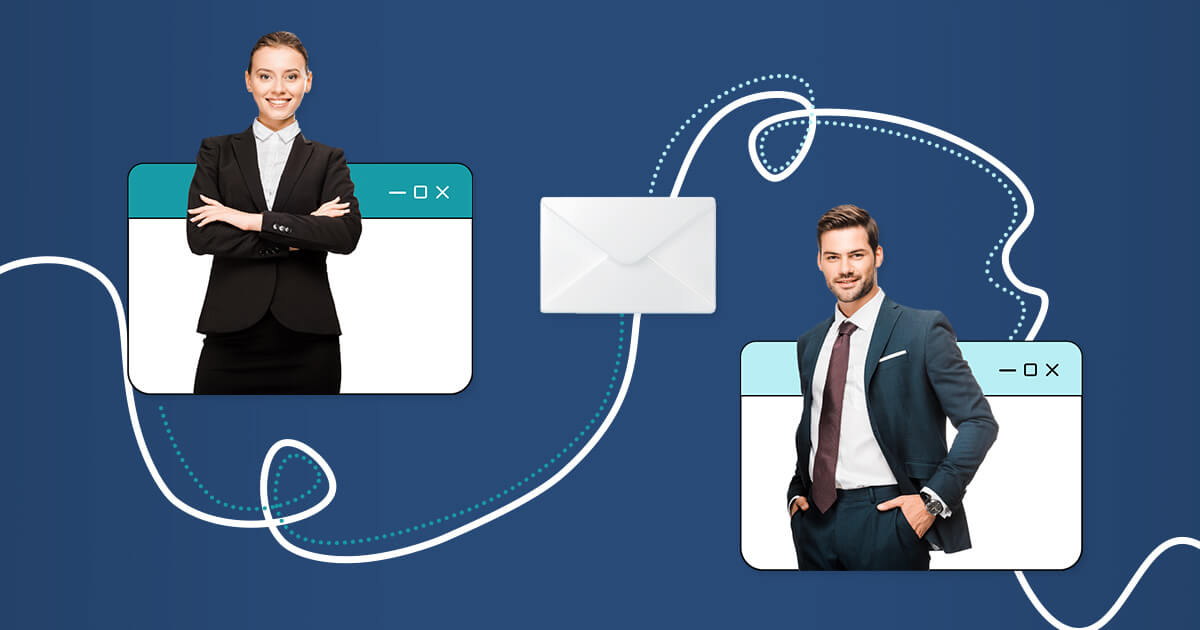Developing an email marketing strategy for B2B: Tips and best practices
Now you know what B2B email marketing is about and how it differs from B2C marketing. So, how do you develop an effective email marketing campaign?
Determine your target customers
You start with determining your target customers. As mentioned above, when targeting another business, you are really trying to attract the attention of several different individuals.
Aim to identify the decision-makers involved in the purchasing process, and your Ideal Customer Profile (ICP). An ICP is an outline of your perfect customer — a customer that is a consistent consumer and advocate of your product. A good ICP should serve as a guideline helping you identify and focus on clients who are more likely to respond to your marketing campaign. Talk to your clients, identify their goals and challenges, familiarize yourself with their buying process.
Another useful type of customer profiling is buyer personas — these are research-based profiles of target customers, their exact role in the company, the issues they face and so on. Since B2B marketing seeks to draw attention of several individuals, you may need to establish several buyer personas for each person involved in the purchasing process.
Segment your audience
Email segmentation is a personalization tactic which means dividing your contact list into smaller segments based on a shared characteristic.
These may be based on the following, but are not limited to:
- Buyer personas (for example, their job title, their location, what role they play in the purchasing process and the challenges they face)
- Behavior (for example, whether this client has engaged with your content before, bought anything from you or subscribed to emails on your website)
- Location
- Demographics
Segmentation helps keep your marketing emails relevant and more personal. Make sure to list every new marketing contact you have in the corresponding segment.
For example, imagine you are in the business of selling CRM software to companies. In this instance, you may want to segment your contacts based on job titles of the recipients (such as purchasing managers) or the size of the company, offering different packages depending on the target company’s size of revenue.
Plan your campaign in stages
Now that you have a better understanding of who your audience is, it is time to plan your campaign. To keep your emails personal and relevant, coordinate your campaign cycle with the potential client’s customer journey. Different types of content are appropriate for each stage of the cycle and customer journey:
- Awareness – the potential client is aware of your brand, but does not intend to purchase anything yet. At this stage, marketing emails should be of informational nature to make your target audience familiar with your services and your brand in general.
- Consideration – the potential client is interested in your brand, but needs an extra push to make a purchase. At this stage, send marketing emails containing other customers’ testimonials, case studies or demos. For customer testimonials and case studies, check out this in-depth guide to help you create a winning strategy.
- Decision-making – the potential client is now interested in purchasing your product, and needs to take budgeting and other internal factors into account. Try using discounts, live demos and free trials at this stage of your email marketing strategy.
- Retention – the potential client has turned into a buyer, and now your aim is to strengthen your relationship (in other words, get your customer to buy more of your product). Emails containing high-level informational materials will ensure your client gets the most out of your product, while exclusive content and extra discounts will encourage them to purchase more.
- Advocacy – if your client is loyal to your product, they will serve as a great advocate for your brand, telling others about you and bringing in new customers. At this stage, emails containing loyalty rewards, testimonial requests, and referral programs could turn a client into an advocate.
Possible types of emails to send during different stages of your B2B marketing journey:
| Awareness |
How-to guides
Content roundups |
Online courses
Workbooks |
| Consideration |
Case studies
Customer testimonials |
Product demos |
| Decision-making |
Discount offers
Live demos |
Free trials |
| Retention |
Exclusive content
High-level informational materials |
Extra discount offers
Company updates |
| Advocacy |
Loyalty rewards
Testimonial requests |
Referral programs
Polling |
Email marketing funnels are a similar concept — they represent the journey a customer takes from their first interaction with a company to making a purchase, and help you determine where potential customers drop off and why.
You have familiarized yourself with your targets and planned your campaign in stages – it’s now time to develop captivating email content.
Develop great email content
Remember to keep the content of your email personal to your client and relevant to their customer journey. This is another instance where features of email marketing tools could save you some time with email management – try importing fields from your contact lists, making sure that your email addresses the recipient by name and mentions the name of their company.
Another tip is keeping your marketing emails relatively short but informative through adding visual guides, formatting, previews and small blocks of text.
This email is informative but not overly verbose, using short blocks of texts, images and scannable formatting:






























